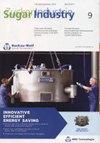Comparison of mechanical vs. chemical weed control in sugar beet – Environmental effects: soil erosion, earthworms, CO2e-emissions
IF 0.2
4区 农林科学
Q4 FOOD SCIENCE & TECHNOLOGY
引用次数: 0
Abstract
Chemical weed control is widely criticized because of its potential ecotoxicological risks. However, the environmental effects of mechanical weeding have not been studied yet. This study aims to evaluate the effects of hoeing, herbicide spraying and combined hoeing-spraying in sugar beet on soil erosion, earthworm abundance, and greenhouse gas (GHG) emissions. Field trials were carried out in Lower Saxony on five sugar beet fields from 2019 to 2021. Runoff and soil erosion were measured by means of rainfall simulation on 2-m2 subplots after weed control. The earthworm abundance was determined in autumn using formalin expulsion. The resources consumption and GHG emissions of each weeding strategy were estimated using KTBL and Biograce online tools. The earthworm abundance was not affected by weeding strategy in most cases. Cumulative runoff and soil loss were six and eight times lower after hoeing compared to herbicide spraying, but only if the soil was crusted before rainfall simulation; otherwise, weed control did not affect soil erosion. The GHG emissions for mechanical and combined mechanical-chemical weed control were higher by factor 2.5 and 1.7, respectively, as compared to the reference chemical weed control. Hence, hoeing is, though non-toxic and erosion-retarding, the weeding strategy with the highest carbon footprint.机械与化学控制甜菜杂草的比较-环境影响:土壤侵蚀,蚯蚓,二氧化碳排放
化学除草因其潜在的生态毒理学风险而受到广泛批评。然而,机械除草对环境的影响尚未得到研究。本研究旨在评价锄地、喷除草剂和混施对甜菜土壤侵蚀、蚯蚓数量和温室气体排放的影响。2019年至2021年,在下萨克森州的五个甜菜田进行了田间试验。采用模拟降雨的方法,在2-m2小样上测定了除草后的径流和土壤侵蚀。秋季采用排甲醛法测定蚯蚓丰度。利用KTBL和Biograce在线工具估算了每种除草策略的资源消耗和温室气体排放。在大多数情况下,除草策略对蚯蚓的丰度没有影响。与喷洒除草剂相比,锄地后的累积径流量和土壤流失量分别降低了6倍和8倍,但前提是在模拟降雨前土壤结皮;除此之外,杂草控制对土壤侵蚀没有影响。与对照化学除草相比,机械除草和机械化学联合除草的温室气体排放量分别高出2.5倍和1.7倍。因此,锄地虽然无毒且抗侵蚀,但却是碳足迹最高的除草策略。
本文章由计算机程序翻译,如有差异,请以英文原文为准。
求助全文
约1分钟内获得全文
求助全文
来源期刊

Sugar Industry-Zuckerindustrie
工程技术-食品科技
CiteScore
0.50
自引率
50.00%
发文量
22
审稿时长
18-36 weeks
期刊介绍:
Sugar Industry / Zuckerindustrie accepts original papers (research reports), review articles, and short communications on all the aspects implied by the journals title and subtitle.
 求助内容:
求助内容: 应助结果提醒方式:
应助结果提醒方式:


